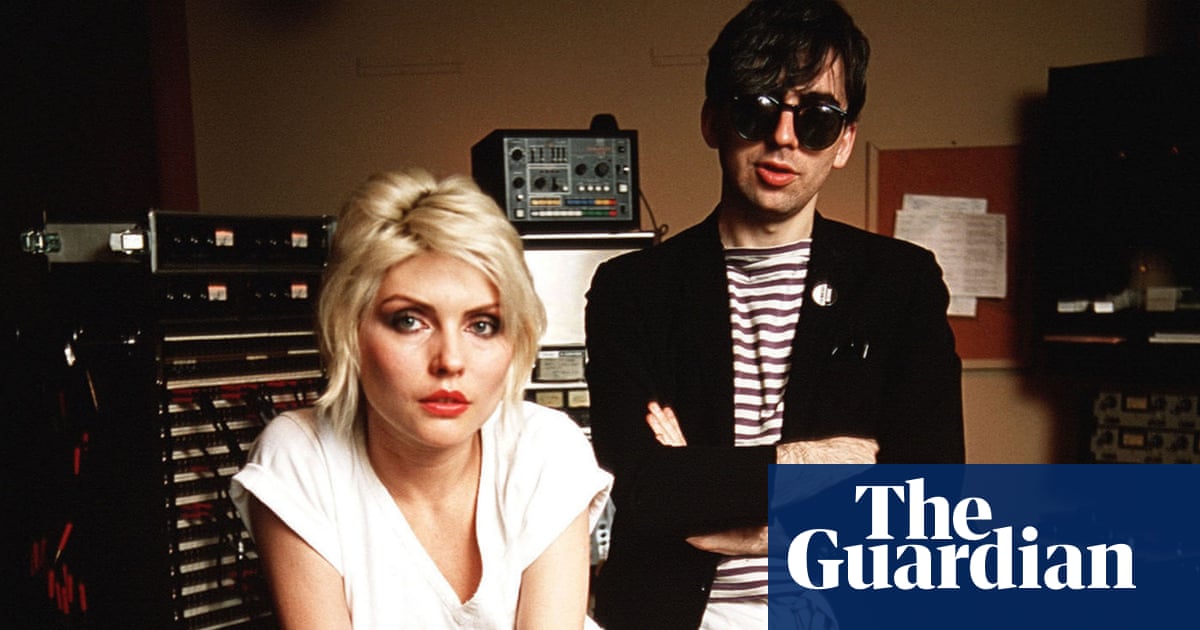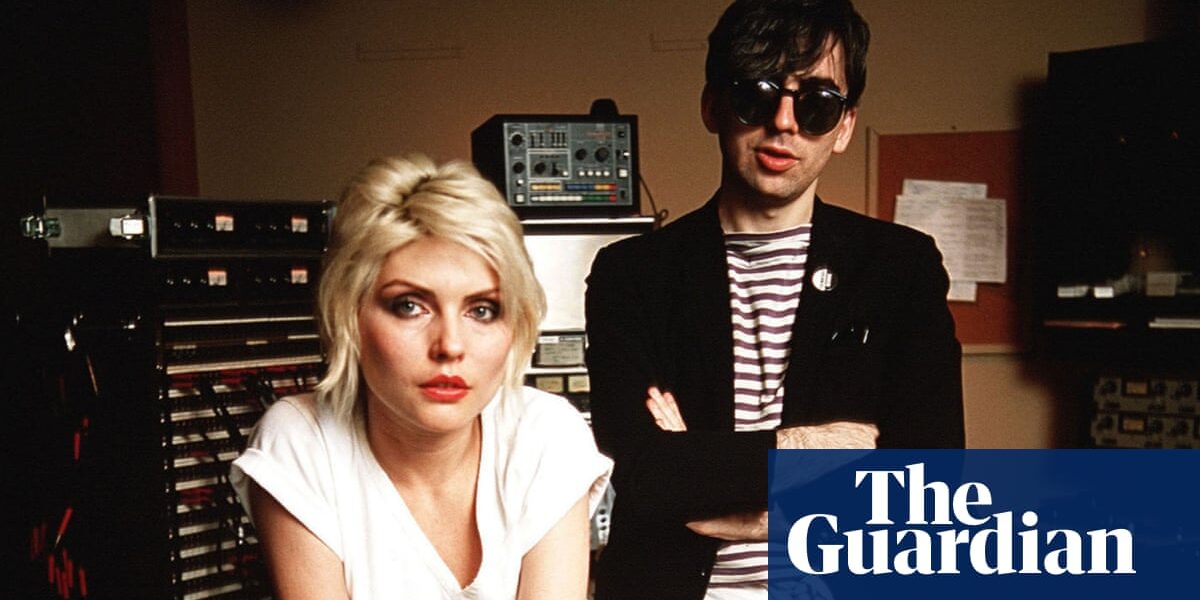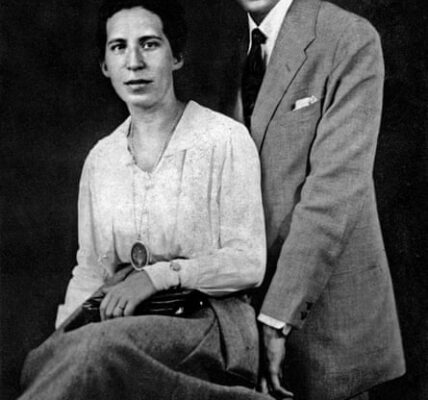
Even before he co-founded Blondie – who swiftly transcended their roots in the New York punk scene to become one of the biggest bands in the world, selling around 40m records in the process – Chris Stein had lived quite a life.
His father died of a stroke in Stein’s first year of high school: thereafter, as his bandmate and former partner Debbie Harry notes in Under a Rock’s introduction, his adolescence was spent “on a very long leash” in late 60s New York. By 14, he had gravitated to the bohemia of the West Village and MacDougal Street, intent on “falling into the final frontier of existential freedom, whatever that means”. He became a hippy, acquired a set of friends with names like Mortician George and Action, formed a band who supported the Velvet Underground in the Warhol era, holidayed with friends in San Francisco’s Haight-Ashbury and took so much LSD that he ended up in a psychiatric hospital before his 18th birthday: after being discharged, he went to Woodstock, where he proceeded to take more LSD. Thereafter, he briefly flirted with Scientology and the Unification Church, colloquially known as the Moonies, and fell into the milieu of radical drag queens and sundry oddballs around Greenwich Village’s Mercer Arts Centre, where the New York Dolls had a residency: his big pal was Eric Emerson, a heroin-addicted minor Warhol “superstar” and singer, obsessed with tattooing himself, who died in mysterious circumstances in 1975. Stein is one of very few people who could reasonably suggest that his life got a little less nuts after forming a hugely successful rock band.
In Under a Rock, all of this is related in a drily funny, but wilfully understated style – every sentence feels like a shrug. In fact, Stein’s writing echoes the way he looked in Blondie: with the visual attention on Debbie Harry, the band’s other members – clad in sharp 60s suits and mop top fringes, eyes frequently hidden behind shades – settled for embodying a certain so-what? New York cool, epitomised by a fabulous moment in the video for Heart of Glass: as the song’s disco-fied pulse bubbles along and Harry sings about love being a pain in the ass, a bored-looking Stein stops miming guitar and holds up a mirror ball, in which bassist Nigel Harrison distractedly checks his hair. Maybe, in Stein’s case at least, that kind of thing wasn’t posturing: he really is as cool a customer as he appeared. There’s something telling about the fact that, in her introduction, Harry professes herself “astonished” at the stories from his adolescence: the implication seems to be that he’d never told her any of it, despite the fact that they were a couple for more than a decade.
Equally, you wonder whether some of the book’s nonchalant tone may be down to the fact that Stein seems to have been more or less permanently stoned from about 1965 to 2008, on weed, acid, coke, heroin, or methadone. His fairly phenomenal drug intake and the “sketchy” situations it led him into – he somehow managed to maintain a smack habit even while being treated in hospital for a rare and potentially life-threatening autoimmune condition – is rendered in the usual style. You could never accuse him of glamourising drug addiction: more than anything, he makes addiction sound like an irritation and a bore. “Crawling around looking for drugs,” he avers, “is annoying and stupid.”
He applies the same insouciant tone to Blondie’s rise from the squalor of punk club CBGB to international superstardom: “In February [1978], Denis was released, and that, as they say, was that.” Their ascendancy is bound up with Harry’s burgeoning sex symbol status, but Stein seems blithely unbothered either by the overwhelming attention focused on her, or the preponderance of fans and journalists perving over his girlfriend.
You get a distinct sense of the band’s combustibility, fuelled by drugs and personality clashes – at one early London show, Blondie’s five male members exit the stage straight on to the street, brawling all the way – but less in the way of analysis of their music. Perhaps that fits. Blondie were a rock band, but they were resolutely focused on singles, rather than albums: in that sense, they were more spiritually akin to glam rock-era stars such as Slade or the Sweet than their punk peers, something underlined by the fact that most of their hits were produced by Mike Chapman, one half of the team that had piloted the careers of the Sweet, Suzi Quatro and Mud. They were blessed with a very keen pop sensibility – Stein elects to cover the Nerves’ obscure 1976 track Hanging on the Telephone when he hears it in a taxi and notices the elderly cabby tapping his fingers on the steering wheel as it plays – and their run of hits between the aforementioned Denis and 1981’s Rapture is one of the era’s unequivocal joys. But only on 1978’s Parallel Lines did they manage to make an album that maintained the standard of their singles from start to finish. They could be groundbreaking: a keen photographer and film-maker, Stein spots the music video revolution coming years before it happens; they picked up on hip-hop and its attendant culture early on, hence Rapture, technically at least the first hip-hop No 1 single. But their music tended to deal in sparkling sugar-rush immediacy rather than hidden depths – their 1978 hit Sunday Girl turns out to be about Stein and Harry’s pet cat.
Incredibly, a combination of poor financial management and their continuing heroin issues meant Stein and Harry exited Blondie broke. Their five-storey Manhattan townhouse and collection of Warhols goes in the process, and so, eventually, does their relationship. More shrugging: “I was upset for a week or two … maybe you want more details but there aren’t many.” A late-90s reunion begins spectacularly – their comeback single Maria goes to No 1 in the UK – but swiftly devolves into an “incessant”, and still ongoing, round of live shows in which the hits are dutifully banged out, and the release of largely ignored new albums, which Stein whips through at a quite astonishing clip, presumably on the grounds that he thinks no one is that interested. In the 21st century, he finally marries, starts a family and cleans up: in a distressing epilogue, he discusses his 19-year-old daughter’s death from a drug overdose in 2023. “I thought that I presented my own drug experiences in a negative light to our kids,” he writes, “but I’m racked with guilt that any discussions might have been misconstrued.”
It’s a horrible coda to a weirdly charming book. For all his shrugging, Stein emerges as genuinely likable – you could certainly never accuse him of pompous self-aggrandising, while the understatement never feels like aw-shucks affectation. He’s also genuinely fascinating, above and beyond his rock star status. An early adopter of everything from the internet to the work of Jean-Michel Basquiat, he occasionally seems more invested in making arty video shows for public access TV than being in Blondie, while something of the hippy era’s penchant for the esoteric seemed to cling to him thereafter, not least a fascination with magic, particularly that of artist and occultist Austin Osman Spare. Stein could have gone on at greater length about some of this stuff, but then Under a Rock could have been longer generally. It’s that rare thing: a music autobiography that leaves you wanting more, not less.
after newsletter promotion
Source: theguardian.com


